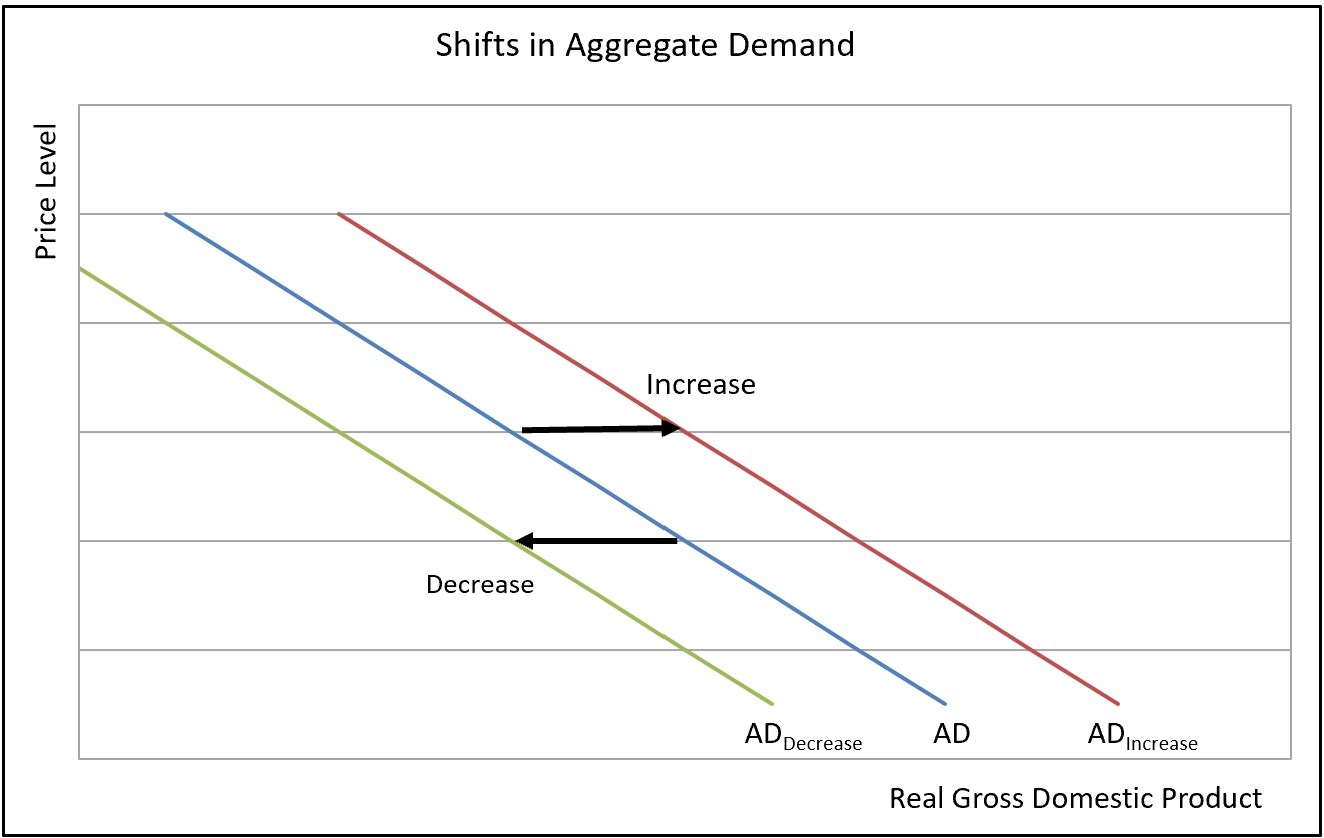The wealth effect describes the psychological effect of how a change in the value of people’s assets influences their spending, even when their income and fixed costs remain unchanged.
Most economists use the term wealth effect to describe how a change in the purchasing power of a consumer’s assets influences consumer spending when the economy’s price level changes. For example, if you have $10,000 in savings, and prices double, the money in savings would only purchase half of what it could before the price increase. The wealth effect affects consumer spending because a price level change influences the consumer’s purchasing power. An increase in the price level diminishes the consumer’s purchasing power and causes a decrease in the aggregate quantity demanded. Movement occurs along the aggregate demand curve to the higher price level. The graph below illustrates how an increase in the price level will decrease the aggregate quantity demanded.

Conversely, a decrease in the price level increases consumer purchasing power and causes an increase in the aggregate quantity demanded. In the latter instance, the movement would be down along the aggregate demand curve to the lower price level and larger RGDP.
Investors also refer to the wealth effect to explain why people increase spending when their wealth increases, even if their income and fixed costs remain the same. Added wealth increases consumer confidence, which increases consumer spending. Suppose Stephan’s stock portfolio increases 30 percent during a booming economy and bull market. The healthy economy and stock appreciation provide the confidence to spur Stephan to purchase a new car or spend more lavishly during the Holiday season.
Stephan would likely reduce his spending if his stock portfolio depreciated, causing a leftward shift in the economy’s aggregate demand curve. The graph below illustrates both of these scenarios.

When a change in the price level induces a change in spending, the wealth effect is illustrated by movement along the aggregate demand curve. However, the wealth effect is explained by a shift in the aggregate demand curve if a change in wealth prompts people to alter their spending patterns.
Fiscal Policy – Managing an Economy by Taxing and Spending
Monetary Policy – The Power of an Interest Rate